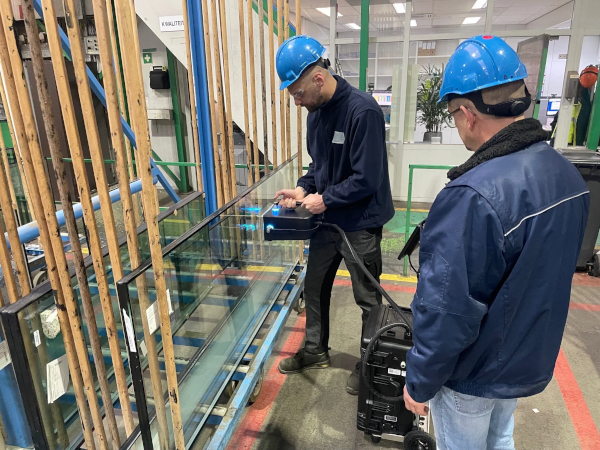Date: 9 January 2003
Pilkington Laurinburg makes float glass, which is flat glass used in architecture, mirrors, residential windows and furniture.Float glass is created in a process where the glass "floats" along the manufacturing line, which at Pilkington Laurinburg is about mile long.The float glass process was invented by Sir Alastair Pilkington in 1952 and is the heart of Pilkington's business, which has plants in 25 countries.At Pilkington Laurinburg - which was built in 1973 and employs about 350 people in a 1,388,000 square foot plant - two manufacturing lines run parallel.The beginning of each line is bordered by two huge furnaces that alternate heating the raw materials of sand, dolomite and recycled glass to 2,500 degrees.Two furnaces are used so one does not overheat."The glass comes out of the furnace, and its flows out onto a molten tin," said Mercer.
The glass - which is liquid - is like oil riding on water, laying on top of the tin and spreading.
Tin is used because the liquid that will become glass would stick to a hard surface.
Because the surface of the molten tin is flat, the glass also becomes flat.
Within about 3 feet, wheels with teeth grab the sheet of glass on each side and pull it onto rollers.
The glass that was floating on tin now floats on the rollers as it slowly cools and hardens while moving down the line.
The width between the wheels is adjusted to change the width of the glass, and the speed is changed to affect the thickness.
As the glass cools, chemicals or coatings are adding to change its color, tint and properties.
The final stage
The final stage is the cross cutters, where the continuous sheet is cut into pieces.
The cutters are automated and cut at an angle, making a straight line across the glass that doesn't stop moving.
The Pilkington operation runs continuously, and the pieces of glass are packed and stored in the warehouse before they are shipped from one of the 34 loading doors.
The final products - which range from the size of a desk calendar to 17 feet high and 10 feet wide - are sold worldwide.
"When you sit down and see a piece of glass, you appreciate what it takes to get it there," Mercer said.







Add new comment